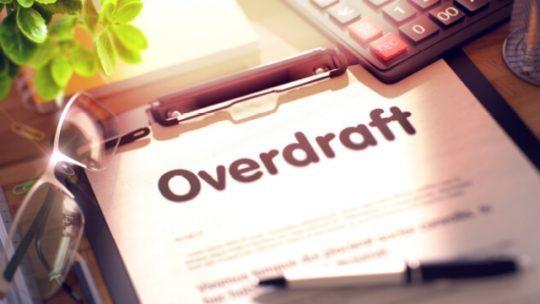- Home
- Blogs
- Personal Loan
- Overdraft Facility
What is an Overdraft Facility?
Reviewed by: Fibe Research Team
- Updated on: 17 Apr 2025
Reviewed by: Fibe Research Team

An overdraft account allows you to withdraw funds in an emergency when you have a low or insufficient balance. It is a type of short-term credit similar to a line of credit. Having knowledge about this facility can help you get instant cash from your bank account without waiting for loan approval during financial emergencies.
For answers to the question, “What is an OD loan?” and to learn about the process to get one, read on.
An overdraft facility is a credit line that is sanctioned to an individual against their assets. This financial instrument lets you withdraw money from your current or savings account against a sanctioned OD limit. The bank sets this limit and levies an interest rate on this facility.
Remember that this limit and the rate of interest rate are determined based on:
You can pledge your FDs, insurance policies, shares, bonds, etc., as assets to avail of an overdraft facility.
There may be situations in life when unexpected financial emergencies crop up. These can be in your business or personal life, and you may not be able to meet them with your savings. Even with funds in an emergency account, you may not always have an adequate amount.
This is when an overdraft account comes in handy. This facility is a great way to raise funds for the short term if used wisely.
With the overdraft facility, you can withdraw funds from your account even after your account balance reaches zero. The bank will set an overdraft or OD limit. You can withdraw cash and transfer funds via cheques, net banking, online banking, etc., within this limit.
This pre-approved, short-term credit can help you manage your finances and fulfil all your requirements. Your bank will charge daily interest on the amount you withdraw from your account. You can prepay the overdraft amount along with the interest charges anytime to replenish your limit.
Also Read: What is Demand Draft?
Here are the key differences between a loan and an overdraft facility.
| Parameter | Overdraft Facility | Loan |
|---|---|---|
| Type of credit | Withdrawn from a savings or a current bank account based on the approved limit | Funds borrowed from the lender, unrelated to your savings or checking account |
| Repayment method | Deposit the entire amount along with the interest levied in the bank account | Repay the borrowed amount on a specific date every month via EMIs |
| Interest calculation | Interest is charged daily based on the amount you withdraw | Interest is charged monthly on either the total sanction or the outstanding balance |
| Tenure | Suitable for a short-term | Suitable for a long or short term based on your needs |
| Disbursal of credit | Instant fund withdrawal from the account is possible once the bank sanctions the overdraft limit | The loan transfer may take a few hours or a few days |
| Prepayment or foreclosure | Allowed without additional charges | Allowed with additional charges |
| Eligibility | No need to submit additional documents each time to prove your overdraft loan eligibility | You are required to submit documentation with each loan application |
Banks calculate interest on overdrafts on a daily basis. This can make it difficult to calculate the exact repayment amount. Moreover, the interest rates are higher than a personal loan, so getting an overdraft can increase your financial burden.
Overdraft is a short-term credit instrument. So, if you don’t pay the full amount or reduce the amount periodically, then you will have to pay penalties. It also affects your credit utilisation ratio. Hence, assess your repayment capacity before opting for the overdraft facility.
However, if you need quick and easy funds without pledging your assets as collateral, then Fibe’s Instant Personal Loan can help you. We offer personal loans of up to ₹5 lakhs within minutes with minimum documents and a quick application process. Download the Instant Loan App or log in to our website and get started.
The overdraft facility is one that allows you to withdraw funds from your bank account despite having the account balance as zero. The bank, in turn, charges an interest on the amount withdrawn.
An overdraft facility is an excellent short-term solution for your financial needs. However, higher interest rates and a short tenure can increase financial strain and overburden your existing finances.
Instead, opting for a personal loan at affordable interest rates from lenders like Fibe may be a more flexible option.
To pay back your overdraft, simply deposit the withdrawal amount and the interest levied in your bank account. You can transfer funds from your alternate savings or current account and repay the withdrawn amount.